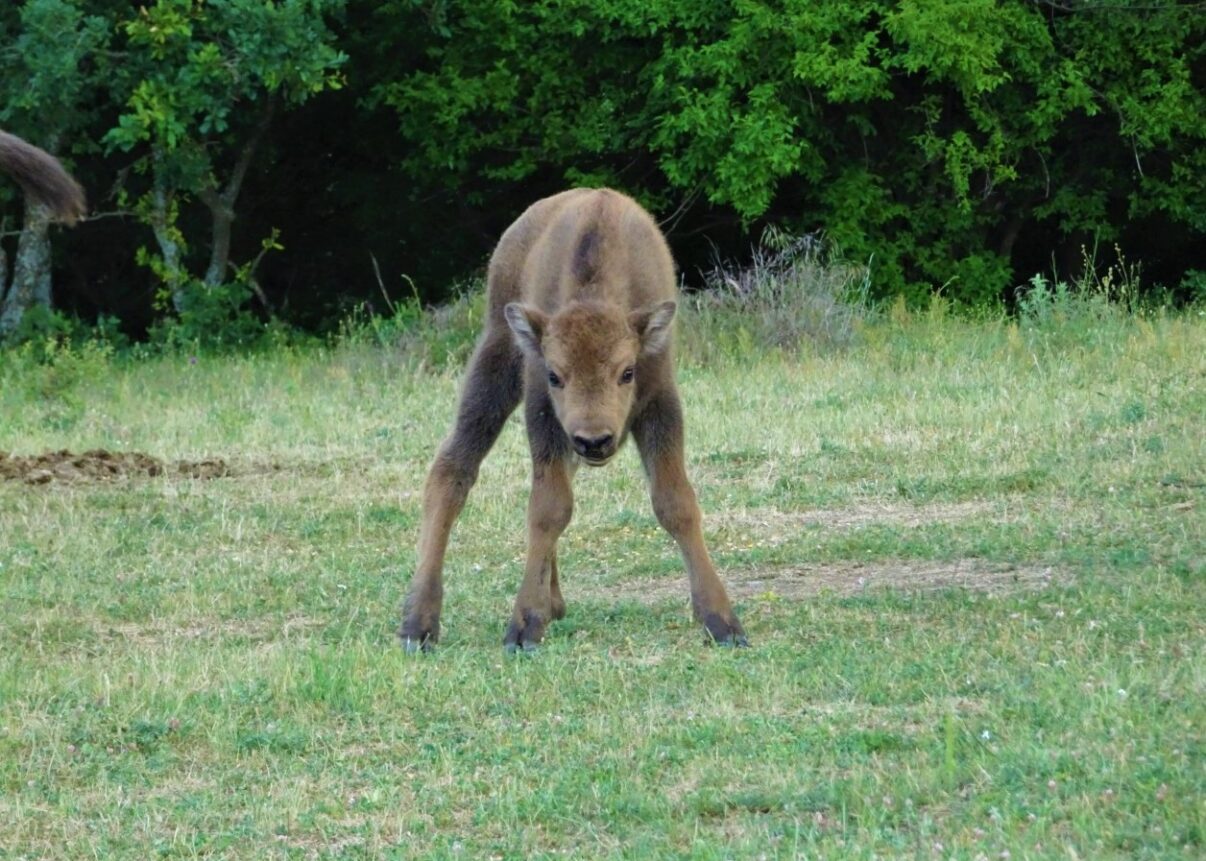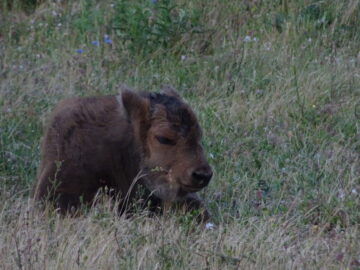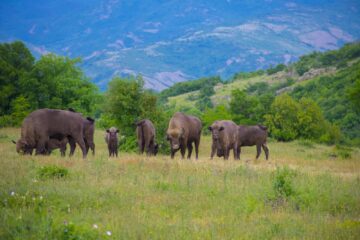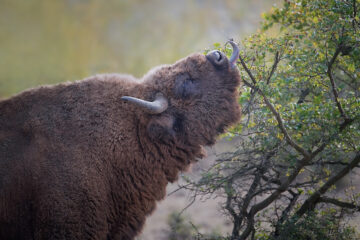A new calf has just been born to the free-roaming bison herd in the Rhodope Mountains rewilding area in Bulgaria. This shows the animals are settling in well and advances the local rewilding process.

A welcome new arrival

There is no greater sign that a reintroduced animal population is acclimatising well to its new home than if it begins to increase naturally. It is great news then that another calf has been born to the reintroduced European bison herd now roaming free in the Rhodope Mountains rewilding area in Bulgaria. Born in the second half of May, the calf is male and takes the herd size to 12 animals. Following the historic release of bison into the wild in the Bulgarian Rhodopes in 2019, this is the fourth animal to be born free south of the Danube in centuries.
“The baby and his mother are doing well, with other members of the bison herd also helping to care for the calf,” says Hristo Hristov, a rewilding officer attached to the Rewilding Rhodopes team. “This year we observed interesting behaviour – all the females separated from the herd before the birth and returned after nearly two weeks with the new calf. Usually, only the mother separates from the herd to give birth, but as this was the alpha female, maybe the other females naturally followed her.”
Towards a wilder Rhodopes

Following their release in 2019, the European bison in the Rhodope Mountains have gradually started to occupy their ecological niche and make seasonal migrations – they spend the autumn and winter in the lower part of the Studen Kladenets rewilding area, and in the spring they gradually climb to the higher and less accessible parts of the rewilding area.
As the herd continues to grow – coexisting with other species such as wolves, deer and vultures – so its beneficial impact on local wild nature will continue to grow too, with the bison helping to create biodiversity-rich mosaic landscapes through their grazing and browsing, as well as enhancing local food chains.
“It’s early days, of course, but things are going well,” says Rewilding Europe’s Head of Rewilding Raquel Filgueiras. “The dedicated Rewilding Rhodopes team are monitoring the animals closely to ensure the continuing success of the reintroduction programme, with the eventual aim of establishing a herd of at least 50 animals.”

An ongoing recovery
The European bison, a cousin of the North American bison, is the largest wild herbivore in Europe. As a grazer and keystone species, it contributes to the maintenance of open forest ecosystems and is an icon for European rewilding. It once roamed across the entire continent (except for parts of Spain, Italy and northern Scandinavia), but sustained hunting and habitat loss saw its range continually shrink across the centuries. When the last wild European bison was shot in the Caucasus in 1927, there were less than 60 individuals alive, all in captivity. Thanks to various breeding programmes and reintroductions, free-ranging European bison herds now total around 7000 animals.
The first European bison in the Rhodope Mountains were translocated from Germany in October 2013. In 2017, two young animals – a donation from Suhl Zoo in Germany – joined the group. In October 2020, two female bison were added to the herd as donations from two European zoos – Sóstó Zoo (in collaboration with Miskolc Zoo) in Hungary and the Bratislava Zoo in Slovakia.
